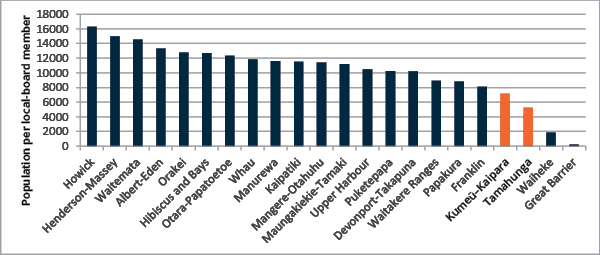Region survives serial secessionism

Sublime Gift of Regional Governance: Simple-minded secessionist nostrum that breaking away will provide back-to-basics local government, ignores the complexity inherent in any metropolis and its hinterland. The regional parks gift enjoyed by today’s 1.3 million Aucklanders, beginning with the purchase of Wenderholm 52 years ago, is testimony to the need to think and plan regionally, regardless of governance structures. print Long White Cloud Art
Serial attempts to turn the clock back six decades have failed, and deservedly. For without regional governance, Aucklanders would be much the poorer, for example, 27 sublime regional parks poorer.
It would also lack a cohesive planning mechanism to cope with the region’s latest growth projections—doubling to a troubling nearly 2.6 million by 2043. Meanwhile, it will be no surprise to those who have any comprehension of huge range of expertise and services that unitary authorities are legally obligated to deliver, that the ratepayers a northern Rodney unitary authority, serving only 24 000 people, would have needed to stump up an estimated additional 20–27% for rates, and for transition costs on top of that.
Meanwhile, despite being assessed as a reasonably practicable option, Mahurangi Action’s proposal for two local boards to replace the current Rodney Local Board, the commission opted for the status quo:

One Size Does Not Fit All: in respect to the ratio of population per local-board representative, there were always going to geographically dictated outliers, including Great Barrier and Waiheke islands. The Kumeū–Kaipara and Tamahunga local boards, proposed by Mahurangi Action, with five members each, would more closely resemble Franklin Local Board, which has nine members. The Local Government Commission costed a northern local board of six, up from the four members currently representing the area, whereas five, the minimum allowed, as on Great Barrier and Waiheke, would have been reasonable and, along with utilising existing Warkworth Town Hall infrastructure, would have been considerably less costly than the $1 million-per-year cost cited as the reason to deny the geographically extensive Mount Tamahunga area its own local board. chart Mahurangi Magazine, adapted from Auckland Reorganisation Process – Auckland Options Assessment Local Government Commission | Morrison Low
The additional cost was estimated to be $1 million per year. Whether that figure was highballed—including for six local board members where there are now four, whereas five would be ample—is now immaterial, given that the opportunity for a fresh Tamahunga Local Board to become an exemplar in local representation has been denied, possibly for the want of the fulsome support of Rodney’s existing local board and its ward member, much less Auckland’s mayor. Meantime the option went largely unreported the local mainstream media, more at home fanning the flames of super-city discontentment—this, despite the option being mentioned at least 35 times in the decision paper, including:
It is 12 years since the then mayor, John Law, explored the possibility of then entire Rodney District being a unitary authority, only to find it would result in a massive rates blowout. It is now more than time for the small-minded notion to be relinquished in favour of working with, and strengthening, regional governance.
And a great opportunity to get on with issues that do matter is Warren Maclennan’s Warkworth Town Hall Talk, on 14 February, the working title of which is:
Planning a remarkable Mahurangi town
Because while the region’s population might be doubling by 2043, that of Mahurangi’s tidehead town is set more than quadruple.

The local board did not provide feedback on the proposals.
Two local boards in Rodney would have created the issue that Waiheke is so frustrated with, a tiny local board, with a tiny budget that is propped up by the sufferance/generosity of the other local boards. Hardly a great position to be in. We are already the third smallest board and have our budget subsidised by the rest of Auckland; making it even smaller would be a backward step.
Over time, as Rodney, and Auckland, grow there may well be an opportunity to create more boards. The ideal population would be about 120 000 and we in Rodney are some way off that, only having a population of 60 000.
As you say, time to accept this and get on with making Rodney an even better place to live!
Beginning with your last sentiment first, Phelan: Yes, it is time to accept that secession as a tiny unitary authority always was an absurd nostrum.
But your inside-out thinking regarding the historical aberration that is the current Rodney Local Board area—the peri-urban leftovers—is appalling for its lack of local governance vision, as evidenced by the failure of the Rodney Local Board to provide feedback on the reorganisation proposals—if Mahurangi Action, and the Mahurangi Magazine could provide constructive feedback, as they have done since the beginning of the Royal Commission on Auckland Governance process, our local board has no excuse.
In respect to what you claim to be the issue with Waiheke—a tiny local board with a tiny budget—you seem to believe that the main job of local boards is to spend money. Waiheke has a tiny local board because Waiheke is a tiny island with a tiny population. It is not the size of board or budget that is important, but how it is used.
As for the supposed ideal size of a local board area population being about 120 000, that is the projected population for 2043 for the entire Rodney Ward area. There is nothing to recommend that an area that takes two hours to drive from corner to corner be represented by one local board—local boards were introduced to address the abject lack of local representation recommended by our inept royal commission. In fact the government allowed for 30 local boards, only to have that number eroded by the Local Government Commission.
So that is a fail for the local board, throughout the reorganisation process, and the for the commissions then, and the commission now, except for the only decision the latter could make in respect to the asinine bid for secession.